Presidential Timeline
Antioch University
(formerly known as Antioch College)
Incorporated on May 20, 1852 as “Antioch College”, the Corporation changed its name to “Antioch University” on December 23, 1977. It has been in continuous existence since 1852. Those serving as the CEO of the corporation over the years are listed below. However, the title for the CEO changed from “President” to “Chancellor” in 1994. Thereafter, the title “President” was used to describe the chief executives of each campus, including the College campus.
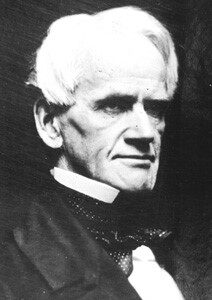
Horace Mann
President, 1853-59
Horace Mann was one of the most important leaders of national education reform and is regarded by many education historians as the father of public education in the United States. He believed strongly that a viable democracy demanded free, universal, nonsectarian, public education in which students learned side-by-side with each other without regard to race, gender, religion, ethnicity or socio-economic background. A free, nonsectarian, public education was as controversial in his time as universal health care is today. Horace Mann led the reform of the “common schools” in Massachusetts from 1839 to 1848. He was the first Secretary to the first state board of education (Massachusetts) in American history.
More about Horace Mann
Mann was born in Franklin, Norfolk County, Massachusetts on May 4, 1796. He graduated from Brown University in 1819, studied law in Litchfield, Conn. and was admitted to the bar in Massachusetts in 1832. He was elected to the State House of Representatives from 1827-1833 and to the State Senate from 1833-1837. He was elected to three terms in Congress from 1847 to 1853 to fill the vacancy caused by the death of John Quincy Adams. He served in Congress with Abraham Lincoln, and was an ardent abolitionist.
Mann was nominated for governor of Massachusetts, but declined in order to accept the offer as the first president of the newly established Antioch College at Yellow Springs, Ohio. While president, he also taught economics, philosophy, and theology; he was popular with students and with lay audiences across the Midwest who attended his lectures promoting public schools. Antioch is regarded as the first College in America to employ women faculty on the same basis and salary as their male colleagues. The first female faculty member was Mann’s niece, Rebecca Pennell.
Known for his commitment to promoting public education, he led Antioch College from its start in 1853 (when he left Congress) until his death in 1859. Collapsing shortly after commencement, when he charged the class of 1859 to “be ashamed to die until you have won some victory for humanity,” he died at home that August.
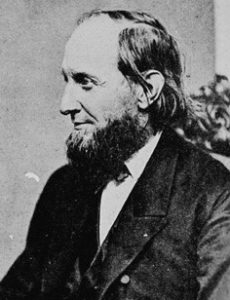
Thomas Hill
President, 1859-62
Thomas Hill, an American Unitarian clergyman, mathematician, scientist, philosopher, and educator succeeded Horace Mann, accepting the presidency on the condition that faculty salaries be paid despite deficits. Despite this stipulation, his salary was often not paid, and he supported his family with loans. Hill and a colleague attempted to raise an endowment, but potential donors were put off by the strong sectarian leanings of some of the college’s trustees.
More about Thomas Hill
In 1862, the Civil War forced the college to shut down, and Hill resigned due to increasing financial troubles as well as sectarian conflict between the Christian Connection and unitarian trustees. He went on to hold the presidency of Harvard University from 1862 to 1868. Ill health caused his retirement from Harvard, and from 1873, he was head of the Unitarian parish in Portland, Maine. Antioch college remained closed until after the end of the Civil War.

Reverend Austin Craig
President, 1862-1865
Horace Mann invited Craig to become professor of Greek at Antioch, and Craig was given a Doctor of Divinity by Antioch in 1857. In 1862, he was elected the third president of Antioch; however, Craig was on leave from 1862-65 due to the Civil War, and following the war consented to serve only until the vacancy was filled.
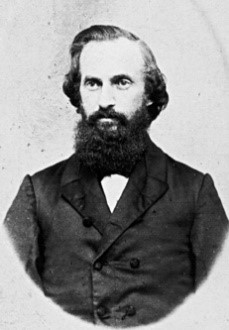
John Burns Weston
Acting President, 1862-65, 1876-77, and 1880-81
While Reverend Craig was on leave, the trustees requested that Rev. J. B. Weston, D. D., assume control of the school. Weston, serving as Acting President, associated a corps of teachers and continued on a self-supporting basis until 1864. An 1857 graduate of Antioch College, and later a professor of Greek at Antioch, Weston served as acting President of Antioch on three different occasions. His association with Horace Mann had been close, and all through life he embodied Mann’s principled traits of character. Like Mann, Weston was always interested in making improvements to education and community life.
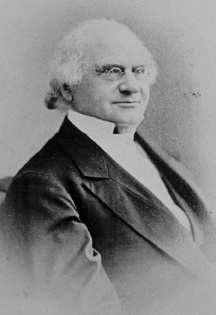
George Washington Hosmer
President, 1866-72
Hosmer graduated from Harvard in 1826, and from the Harvard Divinity School in 1830. Before coming to Antioch, he served as pastor of the Unitarian church in Northfield, Massachusetts. He had served on the Antioch board and, at age 63, he accepted the presidency at Antioch (it had been declined by Governor Andrew of Massachusetts).
More about George Washington Hosmer
Hosmer was also serving as a non-resident professor of divinity in the Unitarian Theological School at Meadville, Pennsylvania. Enrollment at Antioch was low during this period allowing him time to read and study. He enjoyed the company of students, finding his spirits restored by their young and developing minds. After Hosmer resigned as president in 1872, he remained as professor of history and ethics. He was one of the most noted preachers in the Unitarian church of his day.
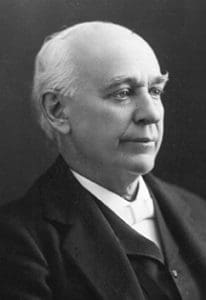
Edward Orton, Sr.
President, 1872-73
Edward Orton, a geologist, became professor of natural history at Antioch College in 1865, and appointed its president in 1872. He served as president for a brief time before becoming the first president of The Ohio State University in 1873, then known as the Ohio Agricultural and Mechanical College. He resigned the presidency at The Ohio State University in 1881, but continued as professor of geology until his death.
More about Edward Orton, Sr.
His studies in geology primarily related to the nature and occurrence of oil and gas. He was widely known as an authority of these natural resources. Orton Hall, the geology building on the The Ohio State University campus, is named after him. He was the uncle to U.S. President and Supreme Court Chief Justice William Howard Taft, the only person to have ever held both positions.
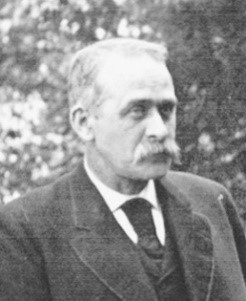
Samuel Carroll Derby
Acting President, 1873-74
President, 1876-81
After graduating from Harvard, Derby came to Antioch in 1870 as professor of Latin until 1877. He was appointed president from 1876-81. He left Antioch to become head of the department of Latin and Greek at the new Ohio State University.
More about Samuel Carroll Derby
Derby also served as trustee at Antioch and, wishing to see the board maintain its liberal element, he wrote to Dr. Samuel Eliot, president of the Unitarian Association, asking him for suggestions of potential board members. Dr Eliot mentioned among others Mr. Arthur E. Morgan who was accordingly made a trustee (and would later serve as Antioch’s president).
Antioch College was closed from 1881 – 1882 to allow the endowment to recover.

Orin J. Wait
President, 1882-83
Rev Orin J. Wait served a brief presidency. He regretted that too few of Antioch’s graduates entered the Christian ministry while many became unitarian ministers.

Daniel Albright Long
President, 1883-99
Long was 39 years old when he accepted the presidency at Antioch, becoming the only Confederate veteran ever elected to the presidency of a college north of the Mason-Dixon Line.
More about Daniel Albright Long
At Antioch, Long established the Hoagland Chair of Physiology, one of the few endowed faculty positions in the College’s long history. Hoagland, a baking soda magnate, had no direct connection to Antioch but out of a sense of gratitude paid the salary of Dr. Amos Duncan, an Army Surgeon during the Civil War whom Hoagland had credited with saving his life. There was, as a result, only one professor to ever hold that chair.
In 1890 Antioch College began publishing Spirit and Life: A Christian Magazine. Long edited the second volume of the paper, after which its publication was suspended. He also edited the Yellow Springs Review. In 1893 he became president of the reorganized Christian Publishing Association in Dayton, Ohio, where he served for eight years. He was the author of Legal History of Antioch College (1890) and Jefferson Davis: An Address Delivered at Concord, N.C., June 3, 1921 (1923).
Long worked hard to raise necessary funds for Antioch from the Christian church but was unable to put the college back on a strong financial foundation. He resigned in 1899, and the school became the property of the Unitarian church. Until Morgan’s presidency in the 1920’s, Long held the record for the longest serving president at Antioch College.

William Allen Bell
President, 1899-1902
The first Antioch graduate to become the college’s president, William Bell was 30 when he was named president. He was a life member of the National Education Association.
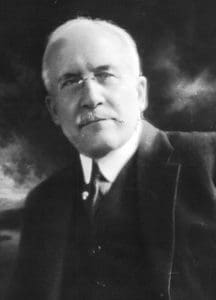
Stephen Frances Weston
President, 1902-1906
Weston was chosen as Antioch’s president in 1902 for expertise in finance. A University Fellow in Finance and author of “Principles of Justice in Taxation,” a monograph he began in 1891 while doing his post-graduate work at Columbia University. It was published the year after he was named Antioch College’s president.
More about Stephen Frances Weston
Weston was professor of economics, social science and psychology at Antioch College from 1902 to 1919 and dean from 1902 to 1906. He was professor of philosophy from 1921 to 1925 and was subsequently named professor emeritus. Dr Weston helped organize the Intercollegiate Peace Association in 1906 and in 1911 was named its executive secretary. In this capacity he edited “Prize Orations” with an historical introduction. At the time of his death he had completed a history of Antioch College.
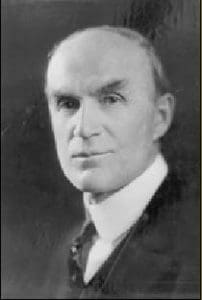
Simeon Davidson Fess
President, 1906-1917
A Republican politician and educator from Ohio, Simeon Fess was named Antioch’s president in 1906. In 1912, he was elected to the U.S. House of Representatives and served three of his five terms while also acting as president of Antioch. In 1900 faculty were paid between $500 and $700 a year, considered a low salary for the time, and the president was paid $1,500 a year. In contrast, Horace Mann’s annual salary, forty years prior, had been $3,000. Enrollment did increase significantly under Fess’ presidency.
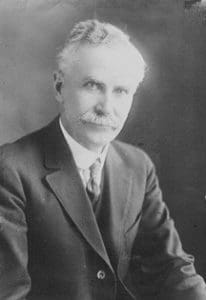
George Douglas Black
Acting President, 1917-1919
As acting president, George Black’s main challenge was maintaining enrollment during a global pandemic and a World War. (Only a handful of people on campus contracted the Spanish flu and there were no deaths). But, like today with COVID-19, facial masks and social distancing were among the few tools to control the impact of the disease which ultimately led to over 675,000 deaths in the U.S.

Grant Perkins
Acting President, February – May 1919
In February 1919, YMCA attempted a peaceful takeover of the college, offering to raise an endowment of $500,000 if Antioch would serve as the official national college of YMCA of the USA. The college’s trustees reacted positively to the YMCA’s proposal, and Grant Perkins, a YMCA executive, assumed the college’s presidency. By May, however, Perkins had resigned, reporting that he was not prepared to raise the necessary funds.

William Marcus Dawson
Acting President, 1919-1920
A native of Ohio and professor of German at Antioch College, William Dawson served briefly to fill the position between Perkins’ departure and Arthur Morgan’s appointment.

Arthur Ernest Morgan
President, 1920-1936
Arthur Morgan, a civil engineer, educator, and first Chairman of the Tennessee Valley Authority, (TVA), was perhaps the most influential and important transformational leader in Antioch history. He is best known for creating the first cooperative educational model for undergraduate education in the United States, a model that is highly emulated throughout higher education today.
More about Arthur Ernest Morgan
Morgan was born in Hamilton County, Ohio in 1878 and had a strong interest in progressive education. Following the great Dayton flood of 1913 which breached the city’s levies along the Great Miami River, Morgan moved to Dayton to design and build a system of flood-control dams and reservoirs. He established the Miami Conservancy District and began his work as chief engineer on the project. During this time, he joined a book club with local industrialists such as Charles Kettering, Orville Wright, Edward Deeds, and department store magnate, Fred Rike, where he talked about his dream of a developing a new and better kind of education program. This led to his founding in 1917 of Dayton’s Moraine Park School, an experimental progressive school which allowed students to engage in small business enterprises as a way of integrating their academic learning with the practical world.
Meanwhile, the Antioch College board of trustees, aware of his school and pedagogical model, elected Morgan to the Antioch board in 1919, apparently without him knowing it; he heard about his election from an acquaintance on the street who had read about it in the newspaper. He accepted nonetheless. On the verge of closing in 1920, the trustees unanimously elected Morgan as president of the college. Ernest Morgan, in his book about his father, “Arthur Morgan Remembered,” wrote that “[Arthur Morgan] had been looking for instruments to change the world – to promote the well-being of humanity and of nature,” and so he saw Antioch and Yellow Springs as a kind of double opportunity to test his higher educational ideas and his concepts for community development and progressive education.
As president, he dismissed many of the trustees, including local ministers, and replaced them with prominent businessmen such as Charles Kettering, who had also backed Morgan’s efforts at the Moraine Park School. With a goal to create a model institution that would create potential business administrators with students well educated to become managers and business owners, between 1921 and 1933, board members and their friends donated more than $2 million to Antioch. Kettering alone donated $500,000. Morgan reorganized the educational program to include cooperative education or “co-op”, a structured method of combining classroom-based education with practical and structured work experience for which students received academic credit. While the curriculum was reorganized and the co-op program developed, Antioch was closed and then in 1921 re-opened. Morgan believed that alternating the curriculum this way would keep the learning alive and help students apply and assimilate the classroom learning. While highly emulated throughout higher education today, Antioch was the first College in the U.S. to adopt a co-op model for undergraduate education. The faculty who were involved, most of them personally chosen by Morgan, included not only academics but also architects, engineers, chemists, advertising executives, and government bureaucrats. Although the co-op program was not required, by 1935 nearly 80% of students chose the program. Morgan’s efforts so improved the quality of education at Antioch that it was ranked among the top three colleges of the nation in a study by the Carnegie Corporation.
In 1933, President Franklin D. Roosevelt tapped Morgan to launch and chair the Tennessee Valley Authority, an historically epic economic development effort to bring hydro-electric power, flood control, manufacturing and navigation to the region. While Morgan was away serving as chair of the TVA, an acting president was appointed to lead Antioch College.
In his book, Ernest Morgan writes that his father was probably the first and only college president in the United States not to have a college degree. During his first commencement as president, his father had felt it inappropriate to wear the normal ceremonial regalia donned by academics. Reluctant to upstage their president, the faculty chose to attend the commencement in business suits.

Algo Donmeyer Henderson
Acting President, 1934-1936
President, 1936-1947
An educator, administrator, and author, Algo Henderson is credited with Antioch’s shared governance model between faculty and administrators. At 39, he was among the youngest American college presidents. He started a bronze foundry at Antioch to teach students small business management.
More about Algodon Donmeyer Henderson
In the late 1940s, Henderson became the associate director of the commission for creating and planning a state university in New York State, which led to the State University of New York, (SUNY). In 1947, Henderson left Antioch to serve as the associate education commissioner of the state of New York until 1950. Upon his resignation from New York, he joined the University of Michigan as a professor and began the first U.S. doctoral program for higher education administration. After retiring from the University of Michigan in 1967, he joined the Center for Research and Development in Higher Education at the University of California at Berkeley. Dr. Henderson authored 14 books on education.
Dr. Henderson testified for the House Un-American Activities Committee (“HUAC”, created in 1934) regarding whether leftist ideas and Communist groups were a threat to colleges in Ohio.
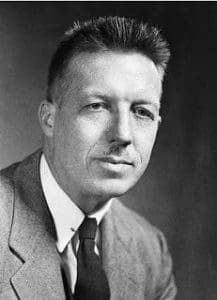
Douglas Murray McGregor
President, 1948-1954
Before becoming president of Antioch College, McGregor was a management professor at MIT’s Sloan School of Management.
More about Douglas Murray McGregor
On July 14, 1952, McGregor testified before the House Un-American Activities Committee (“HUAC”). When asked about subversive activities at Antioch, he replied that he believed in a free-thinking and open America, and that it should apply on campuses too. While he admitted to some of his staff being leftists and who might take a position considered quite liberal, and while there were students who participated in groups with Communist ideas, he said “I believe a college campus should contain people with what we call at Antioch a happy diversity of ideas…,” and he did not plan on taking any action to censure the staff’s or students’ thinking. He concluded by testifying that he did not believe Antioch College was communist-ruled or communist-dominated.
In his seminal 1960 book “The Human Side of Enterprise,” McGregor revolutionized human resources thinking by suggesting two ways managers could view employees: Theory X assumes workers are inherently lazy; Theory Y assumes workers are self-motivated. While not clearly on the side of Theory Y, McGregor leaned toward the idea that management should ultimately set the workplace conditions to allow people not only to work well, but to want to work well. His theories remain an indelible part of contemporary management thinking.
In 1994, the School of Adult and Experiential Learning (SAEL) at Antioch University was renamed the McGregor School in his honor and eventually expanded to become Antioch University Midwest in Yellow Springs, Ohio.

Samuel Brookner Gould
President, 1954-1959
A visionary educator, Gould was known for promoting access to education through non-traditional means such as educational television, college teacher-mentor systems, and universities without walls. It was under his presidency that Antioch College expanded to include a pioneering international program, called Antioch Education Abroad (AEA), established in 1957.
More about Samuel Brookner Gould
Gould went on to serve as Chancellor (1959-62) of the University of California, Santa Barbara, and in July 1962, he became president of the Educational Broadcasting System in New York with the flagship station, WNDT-TV. In his two years there, he took a leading role in raising the standards of American educational radio and television. He is probably best known for his service as Chancellor of the multi-campus State University of New York, 1964–70, bringing the disparate SUNY campuses into one unified institution.
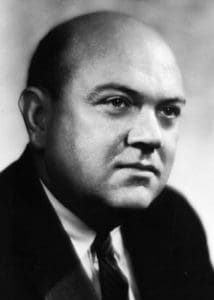
James Payson Dixon, III
President, 1959 – 1975
Jim Dixon, was the architect of the University system that grew out of Antioch College. For its first 110 years, Antioch’s mission had been limited to undergraduate education of traditional age students in Yellow Springs, Ohio. In 1964, that changed under Dixon’s leadership with the acquisition of the Putney School in Vermont, and its graduate programs in education. He would go on to lead over the creation of innumerable adult, satellite campuses across the U.S. under an expansion strategy some referred to as, “letting a thousand Antioch’s bloom.”
More about James Payson Dixon, III
A Harvard-educated physician, Dixon attended Antioch College from 1934 to 1939. He was one of the first students at Harvard Medical School on academic scholarship and received his medical degree in 1943. A life-long pacifist, Dixon registered as a conscientious objector during WWII and completed his alternative military service with the National Institutes of Health. Drawn to the challenges and opportunities in the emerging field of public health, he went on to earn a Master’s in Public Health Administration degree from Columbia University in 1947.
While serving on the Board of Trustees at Antioch, Dixon was asked to consider and then accepted the role of President of the College. A lifelong champion of civil rights, Dixon was especially pleased to invite Martin Luther King, Jr., to campus as the College’s commencement speaker in 1965.
With a desire to spread Antioch’s educational vision of innovation and student governance, and with the College as the central operating institution, Dixon encouraged the development of approximately forty satellite campuses or programs with faculty, administrators and college alums launching each of these new Antioch learning communities. Known as the Antioch Network, its branches reached post-traditional-age students or “adult learners”. Most were graduate level programs which operated successfully for years with reputations for high quality education. But, some proved to be unsustainable over the years and eventually closed. The remaining campuses are those that comprise the current Antioch University. Dixon’s enduring legacy will be his vision of expanding the mission of Antioch beyond the four corners of Yellow Springs, Ohio and transforming it into a national institution.
However, at the same time, Dixon was faced with the deep unrest on the College campus resulting in the 1973 student strike that closed the campus for seven weeks. The strike was motivated by deep cutbacks in federal student aid under the Nixon administration. Affected students, many of whom were first-generation-college, minority and low-income students, demanded that the Board of Trustees provide institutional aid to replace the federal aid. When the board determined that it could not financially make such a commitment, the students locked down the campus. The strike ended only after a lawsuit for injunctive relief was brought by students opposing the strike which ultimately resulted in the sheriff removing the students and the barricades. The strike is regarded by many as the beginning of the end of Antioch College’s golden age of high enrollment, although the ending of the Vietnam War certainly had an equally significant negative impact on student enrollment, at Antioch and elsewhere.
In a biography published by his wife, Dixon’s years as Antioch’s leader are recounted (see Antioch: The Dixon Era, 1959-1975: Perspectives of James P. Dixon).

Morris Teuton Keeton
Acting President, 1975-76
Keeton shared leadership responsibilities with Acting Administrators Robert and Kay Levin from 1975-76. Morris and his wife Ruth moved to Yellow Springs in 1947, and, over the next three decades, he served as Antioch College’s pastor, professor of philosophy and religion, dean of faculty, provost, vice president and acting president. After his successor was hired, Keeton returned to his post as the College’s Chief Academic Officer.
More about Morris Teuton Keeton
Most notably, Keeton moved to Columbia, MD, where he founded a new offshoot of Antioch, the Council for Adult and Experiential Learning, CAEL.ORG in 1974. CAEL has become a renowned, national, nonprofit organization that works within higher education and the public and private sectors to close the gap between “traditional” and “adult” learners by providing access to lifelong educational pathways. Keeton served as CAEL’s president until 1989. By resolution, the Antioch Board of Trustees awarded an honorary degree to Keeton in 1989.

William M. Birenbaum
President, 1976-1985
William Birenbaum presided over a period of retrenchment at Antioch, reducing significantly the number of satellite campuses and programs, many of which were simply not sustainable. During the early 1970s, enrollment at the College had dropped from well over 2,000 to just over 1,000 students. Birenbaum, known as a champion of innovative and sometimes unorthodox approaches to higher education, was chosen to rescue the University from insolvency. He implemented cost-cutting measures that included reducing the number of satellite campuses or programs from 40 down to fewer than 10.
More about William M. Birenbaum
In 1978, the Board of Trustees voted to change the name of the institution from “Antioch College” to “Antioch University” to reflect that it was no longer only an undergraduate institution serving only traditional age students. However, Antioch University is the same corporation originally founded in 1852 as “Antioch College”. The tradename “Antioch College” continued thereafter to be used to describe the College campus in Yellow Springs.
Birenbaum received national attention for his efforts to address financial difficulties and employ stringent austerity measures. In 1983 the board authorized Birenbaum and his provost to engage consultants to advise and assist in redesigning the academic program offered at Antioch College. He retired in June 1984. A year later, the Board of Trustees voted to award Birenbaum with an honorary Doctor of Laws degree.
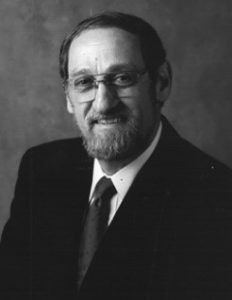
Alan E. Guskin
President, 1985-1994
Chancellor, 1994-1997
During Guskin’s era at Antioch, several more of the University campuses were closed and the University was reorganized placing the College and the other campuses as co-equal operating units under a federated model of governance in which each campus operated relatively autonomously.
More about Alan E. Guskin
Guskin had previously been Chancellor at University of Wisconsin-Parkside following the merger of the University of Wisconsin and Wisconsin State University in 1974. In 1960, as a student at the University of Michigan, he helped organize a student group that is widely credited with inspiring John F. Kennedy to establish the Peace Corps.
By 1988, Guskin had recommended the closure of three other operating unites of the University including the Antioch School of Law, in Washington, D.C., Antioch Philadelphia and Antioch West in San Francisco. In the meantime, the College campus underwent significant renovations to try to rebuild enrollment. Buildings that had been boarded up were repaired and reopened, including South Hall, one of the college’s three original buildings.
In 1994, citing the challenges of serving as both the College and University president, Guskin presided over the change to a federal model, wherein Antioch College became one of the six campuses or operating units comprising Antioch University. The College acquired its own President, James E. Crowfoot, and Guskin was named Chancellor of the University, which then had its own central administrative operations in support of the campuses. As Chancellor, Guskin was the CEO of Antioch University.
After retiring from Antioch in 1997, he was elected Chancellor Emeritus by the Board of Governors. Guskin returned to Antioch shortly thereafter as faculty to co-found with Laurien Alexander the highly innovative Graduate School of Leadership and Change, and its low-residency PhD program. He retired for the second time in 2018.

James W. Hall
Chancellor, 1997-2002
Hall was the founding president of Empire State College in Saratoga Springs, N.Y., a highly experimental institution created by the State University of New York (SUNY) in 1971 to address the needs of post-traditional, adult students. He served in that role from 1971 to 1997, and was later named president emeritus. In October 1997, the board hired James W. Hall to replace Guskin as Chancellor of Antioch University.
More about James W. Hall
At Hall’s urging, in February 1998, the board amended the by-laws to re-designate the position held by the heads of the university’s non-residential campuses from “provost” to “president” of his/her respective campus. Hall has authored texts on education, including In Opposition to Core Curriculum: Alternative Models for Undergraduate Education with Barbara Kevles (1982) and Access Through Innovation: New Colleges for New Students (1991). He was also the editor of Forging the American Character (1971) in Holt Rinehart’s American Problem Series.
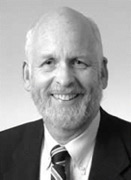
James H. Craiglow
Chancellor, 2002-2004
Jim Craiglow began his association with Antioch in 1976 as a graduate student at Antioch New England in Keene, NH. He served as provost and President there from 1986 to 2002 when he was promoted to Chancellor of Antioch University for an 18-month period while university administrators conducted a search for a new Chancellor.
More about James H. Craiglow
Craiglow continued to reside in Keene, NH, spending a week each month on the campus in Yellow Springs to work with the college president on retention and fiscal matters. He also traveled to the west coast campuses regularly to meet with campus presidents. Following his retirement from Antioch in 2005, Jim continued his lifelong commitment to community service in Keene on the boards of Monadnock Developmental Services and Stonewall Farm, also serving as president of each board for a length of time.

Tulisse A. Murdock
Chancellor, 2005-2012
Tullisse (“Toni”) Murdock presided over the University at a time of deep financial exigency at Antioch College campus brought on by decades of declining enrollment, and an historically small endowment. The College was highly dependent on tuition revenue and by 2007 there were fewer than 200 students. Therefore, in June 2007, Murdock recommended, and the board approved, cessation of operations of the College to be effective after a teach-out ending in December 2008. Her decision is credited with saving both the College and the University from certain bankruptcy.
More about Tulisse A. Murdock
Murdock was originally appointed by Antioch in 1997 as president of Antioch University Seattle, where she served for nine years. She was the campus’ first female chief executive and, in 2005 she became the university’s first female Chancellor. After announcing the suspension of operations at the College in June, 2007, Murdock worked over the next two years to negotiate an asset purchase agreement between the University and a group of college alumni allowing them to acquire the college campus and a license to use the name “Antioch College”. The transaction closed in September, 2009 and the College was reopened in 2011 as a separate, independent institution with a shared history and heritage with Antioch University. Murdock retired as Chancellor in June 2012.
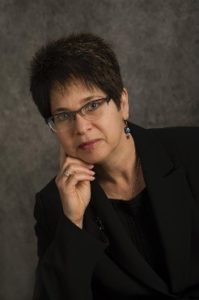
Felice Nudelman
Chancellor, 2012-2016
Nudelman served as executive director of the education group for The New York Times Company. Known for her expertise in education leadership and innovative online education programs for journalists around the world, Nudelman was hired as Chancellor of the university in 2012. During her tenure, she oversaw the construction of a new campus facility for the Seattle campus and the addition of a variety of online programs.
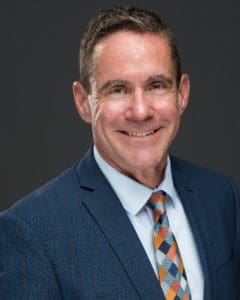
William R. Groves
Chancellor, 2016-Present
Groves was hired as General Counsel of the University in 2010 creating the first University office of General Counsel. Prior to then, he had served as outside University Counsel managing all of the legal affairs of the University including those related to the closure and sale of the College. In June, 2014 he was promoted to Vice Chancellor, General Counsel and then in April, 2016, the Board asked that he step in as Chancellor to reorganize and stabilize the University. In June 2016, the Board of Governors approved Groves’ “Realignment Plan”, reorganizing board, administrative, and academic governance, sunsetting the separate campus boards of Trustees, and integrating the five university campuses and programs into one, national university.


